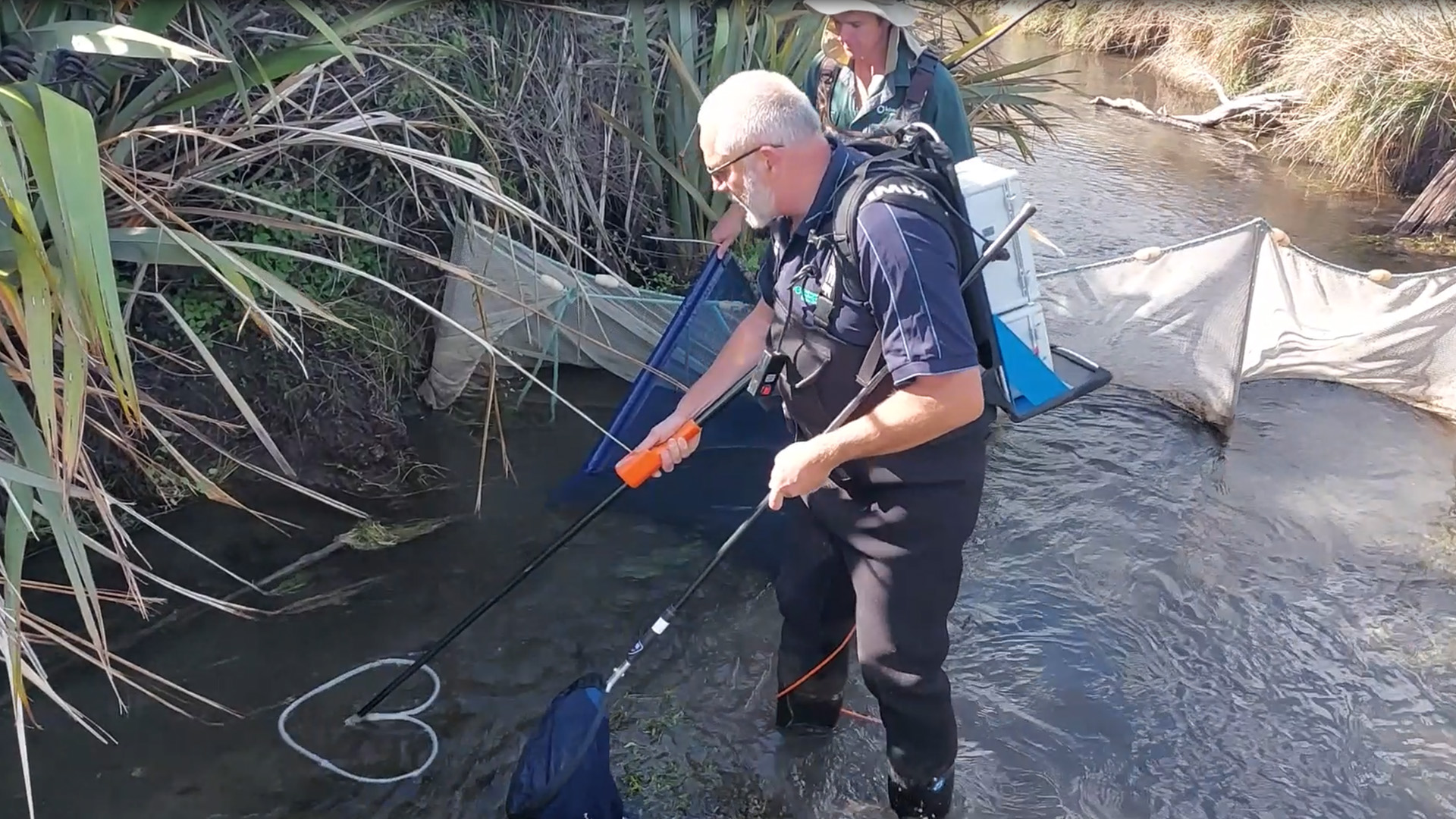
Innovative electric barrier protects mudfish habitat
About 200 trout and two-dozen tuna/eels have been relocated within Hororata’s Bealey Stream, as part of a wider project to protect the Nationally Critical Canterbury Mudfish/kōwaro.
The brown trout were situated upstream of an underwater electric barrier, which provides a safe haven for kōwaro in a pocket of habitat on Haldon Pastures Farm.
The solar-powered ‘fish fence’ was activated in 2021 and is thought to be the first of its type in the Southern Hemisphere.
It consists of three underwater iron structures, which send out electric pulses to discourage trout from moving upstream - where they would otherwise prey on the mudfish.
This has increased the upstream habitat size for the mudfish, a taonga species, from about 800 metres to 8,000 metres.
Banding together for biodiversity
The project is a joint effort between us, Department of Conservation (DOC), North Canterbury Fish and Game, Fonterra and landowner John Grigg.
The agencies recently pitched in to relocate the residual trout and eel population to the downstream side of the fence, to keep them away from the kōwaro.
An electric fishing method was used to capture the fish, which were put into buckets, measured, and safely relocated.
More than 70 trout were caught and transferred over five days in early March, and since then, about 130 more have been moved.
Our Pou Matai Ko (Cultural Land Management Advisor), Steve Carrick, said this year’s low water levels were advantageous for electric fishing, as it improves access.
“This is the second year that we’ve got together for a week and come out and blitzed it. This time, we were able to get to areas that we wouldn’t usually be able to.”
He said the joint agency approach is key to the success of not just the trout transfer exercise but the overall barrier project.
“It’s great to have those other agencies working with us because their skillsets and knowledge bases, particularly from the DOC team – for the history of this place, gives us that long-term view.
“Of course, none of this work would be possible without the landowner’s cooperation. John’s willingness to give us access to the property and his support of these preservation initiatives, is invaluable,” said Steve.
Preserving the mudfish population
John is impressed by the ‘outside the box’ approach to protecting the kōwaro.
“It’s great to be involved in something so innovative and totally different. Often, you do have to think outside the square to protect nature.”
DOC biodiversity supervisor, Craig Alexander, said mudfish numbers have been declining over the years, and the barrier is one way of trying to secure populations into the future.
“The next round of population monitoring is due to be carried out in winter, so it will be interesting to see whether there’s any evidence yet of the barrier’s success.”
North Canterbury Fish and Game officer, Richard Cosgrove, said the increased collaboration between the freshwater management agencies provides opportunities to better protect non-migratory native fish like the kōwaro.
“Working together helps us identify places like Haldon Pastures Spring Creek and its wetland complex, which has a high native fish conservation value and low recreational trout fishery value.
“The site is an example where the electric barrier installation and trout removal help create a network of native fish sanctuaries with little or no adverse effects on recreational fishery values held by anglers.
“It will be really interesting to see how the project progresses over the years. There’s potential for it to be replicated in other sites, so it’s pretty awesome to be able to help out and get some data and prove its effectiveness, one way or the other.”
The joint team is also working with the barrier’s North American manufacture, Smith-Root, to explore other ways of proving its functionality, without stressing the fish samples.


